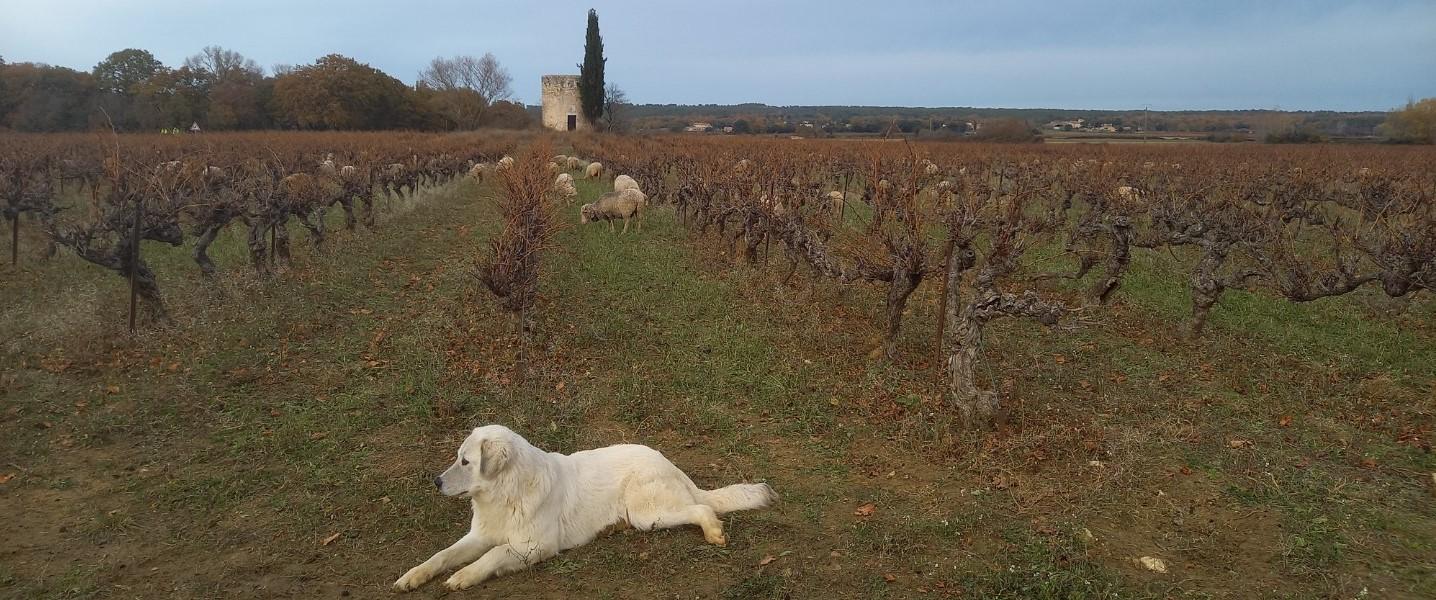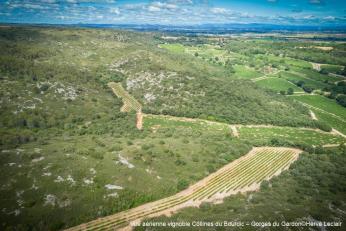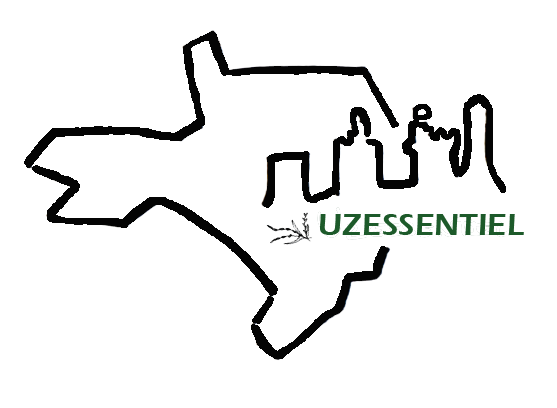
Ecopasture in the Bourdic vinyard
- Par nbesse
- Le 27/01/2022
- Dans UzEssentiel in English
FR - The ecopasture adventure in the Uzège began 5 years ago with the decision of some wine growers from the cooperative cellar Les Collines du Bourdic to allow herds of sheep to graze on their plots of land, first in Blauzac, then in Arpaillargues, demonstrating the wine professionals' growing concern for the environment.
Natural weeding mowers for an environmentally responsible partnership
This is a true eco-responsible partnership for the wine cooperative Les Collines du Bourdic, founded in 1928 and representing over 100 wine growers, such as Geoffrey and Lily Bastide, owners of a vineyard in Aubussargues, who decided two years ago to turn to ecopasture for some of their land mowing.
With 17 hectares to take care of near Uzès, the couple invites Montignargues shepherd Louis Maréchal to come and work in their vineyard.
|
Ecopasture being a method to reduce grass cover in the winter, it improves the performance of mechanical weeding tools, and is more environmentally conscious. It is an alternative to the chemical weeding treatment too, which is gradually disappearing from vineyards. At the same time, ecopasture helps the reintroduction of biodiversity and the fertility of the land through the use of organic material**.
|
Chemical weeding vs pasture
" With the assistance and support of the Collines du Bourdic, our vineyard in Aubussargues has received the Haute Valeur Environnementale (HVE – High Environmental Value)label ***, points out Geoffrey Bastide.
The collaboration between him and the shepherd results in a truly active collaboration with the Collines du Bourdic, as "Louis Maréchal, a farmer without land as he defines himself (with no land of his own), has his herd of sheep pasturing in the vineyards and meadows of other Collines du Bourdic vineyard owners too."

|
Did you know ? The Collines du Bourdic vineyard stretches from Saint Chaptes to Collias, from Uzès to Sainte Anastasie, and spans 1 600 hectares across 10 villages.
|
Instructions for Ecopasture
|
"An ancestral practice, ecopasture has been reintroduced for several years now" ** |
The shepherd comes on the vinyard once or twice a year when the grapes are being harvested and decides on the work to be done later with the landowner. After a summer stay in the Alpes d'Huez, the shepherd leads his sheep herd in the vineyard in winter with the help of his Pyrenean mountain dogs.
Every day, 400 to 500 sheep and some Rove goats (a tradition calls for them to join the herd) come to pasture 1 ha/day. Mowing 17 hectares of land takes about 15 days.
Many thanks to Geoffrey and Lily Bastide, of the EARL Ausardier, in Aubussargues, and to Cécile Mestrallet, in charge of the development and distant-selling at the Collines du Bourdic for their collaboration to this article.
Photographies : The herd of Louis Maréchal in the Aubussargues’s vinyard©Geoffrey et Lily Bastide. Aerial view of the Collines du Bourdic’s vinyeard – Gorges du Gardon©Hervé Leclair, Les Collines du Bourdic.
To visit : Œnotourism, a discovering path starting near the wine cellar of the Bourdic to learn more about vinyard, wine and patrimony. All year long.
The right address : Les Collines du Bourdic, Caveau du Bourdic, 30190 Bourdic, et le caveau de Saint-Maximin, 2 Chemin de Férigoulières, 30700 Saint Maximin.
Source et lectures : *Les Collines du Bourdic, **FR3 Région « Environnement : connaissez-vous l’éco-pastoralisme ? Une alternative écologique (29/04/21), Vincent Dupouy et Lucie Lagoutte, *** La Haute valeur environnementale (HVE).







